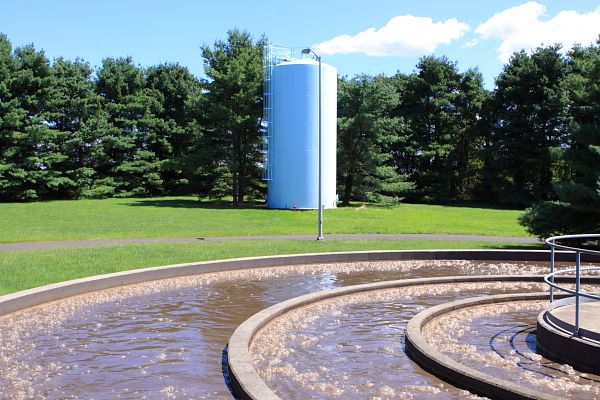
Stonybrook Regional Sewage Authority wastewater treatment plant - over 30 year old technology in need of upgrades
EPA needs to step up its State oversight game
NJ Spotlight (“Where issues matter”) posted $78 million as their number of the day today.
Because we’ve focused on infrastructure deficits – climate change adaptation and water in particular – we thought we’d provide some context for the Number of the day.
New Jersey’s water infrastructure is in dire need of repair, and the federal Environmental Protection Agency has awarded the state $78 million, to be used in a revolving fund of low-interest loans to upgrade sewage plants and drinking water systems around the state.
The Clean Water State Revolving Fund received $57.7 million, which will be used to make improvements to wastewater treatment systems and control pollution from rain water runoff. The Drinking Water State Revolving Fund received $20 million to finance improvements to drinking water systems, particularly in small and disadvantaged communities.
The Sierra Club’s Jeff Tittel used the announcement to take aim at the Christie administration, charging them with backing off on stormwater and floodwater hazard regulations, as well as weakening protections in the Highlands and Pinelands, which are critical water-supply areas. Although Tittel welcomed the EPA investment, he said the state has a backlog of $25 billion in needed repairs. “This shows the EPA is more concerned about our water quality than the Christie administration.”
So what is the context here? What are the real policy issues? What are the facts? What is NJ’s infrastructure deficit? As indications of “commitment”, what are the trends in EPA and State funding and regulatory policy?
I) NJ State Issues
First of all, as we reported in August of last year, NJ has a $28 billion water infrastructure deficit (drinking water and wastewater, exclusive of climate change adaptation, additional drinking water treatment for unregulated contaminants, and CSO).
Through the NJ Environmental Infrastructure Trust, the State of NJ provides more than 10 times more money for water infrastructure than US EPA.
[President Reagan, as part of his federal government dismantling effort, ended the federal funding commitment to water infrastructure when he abolished the original Clean Water Act’s EPA Construction Grants program and created a state funded program now known as State Revolving Funds.]
II) Federal Resources and Oversight Declining
As we reported back in February of this year, Obama Budget Cuts EPA and Clean Water Funding – reducing aid to State’s for water infrastructure.
Yes, we know those big bad Republicans in Washington are waging a “War on the Environment”, but this was President Obama’s budget and he initiated EPA cuts and he failed to fight for more funding for clean water – he didn’t even try.
Here is the recent EPA CWSRF data – (Source: USEPA – hit links below – FY ’09 omitted due to one time Recovery Act stimulus funds)
Fiscal Year EPA Region 2 NJ Share National Total
FY 2010 $345 $84 $2.1 billion
FY 2011 $250 $61 $1.5
FY 2012 $239 $58 $1.5
- FY 2010 Enacted Final CWSRF Allotments
- FY 2011 Clean Water State Revolving Fund Title VI Allotments
- FY 2012 Clean Water State Revolving Fund Title VI Allotments
In term of federal EPA oversight, back in the day, EPA funding used to come with strings attached – EPA would use federal funding to leverage state performance.
III) Bottom Line
So why is EPA awarding ANY money to NJ when the Christie Administration is rolling back water quality protections across the state?
These rollbacks are happening at a time when NJDEP is:
- failing to make progress on clean water,
- failing to address known drinking water contamination, and
- failing to implement mandatory programs under the Clean Water Act, like a TMDL on Barnegat Bay and CSO controls for NY Harbor complex
EPA needs to step up its oversight game and leverage federal resources, not reward NJ and the Christie administration for rollbacks and failure to perform.
EPA needs to threaten to withhold federal funding if NJ fails to meet its obligations under the Clean Water Act.
